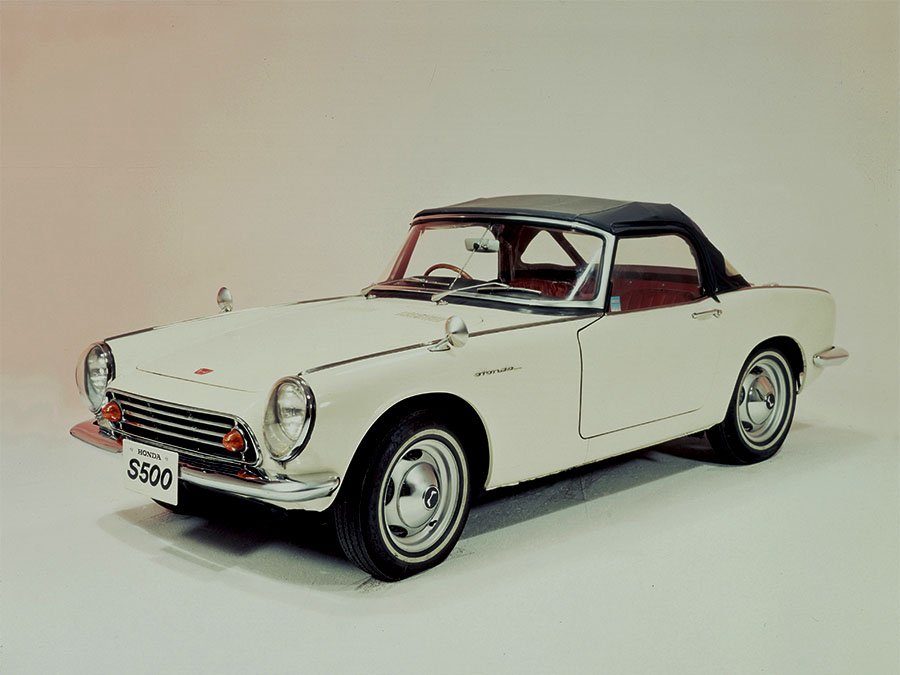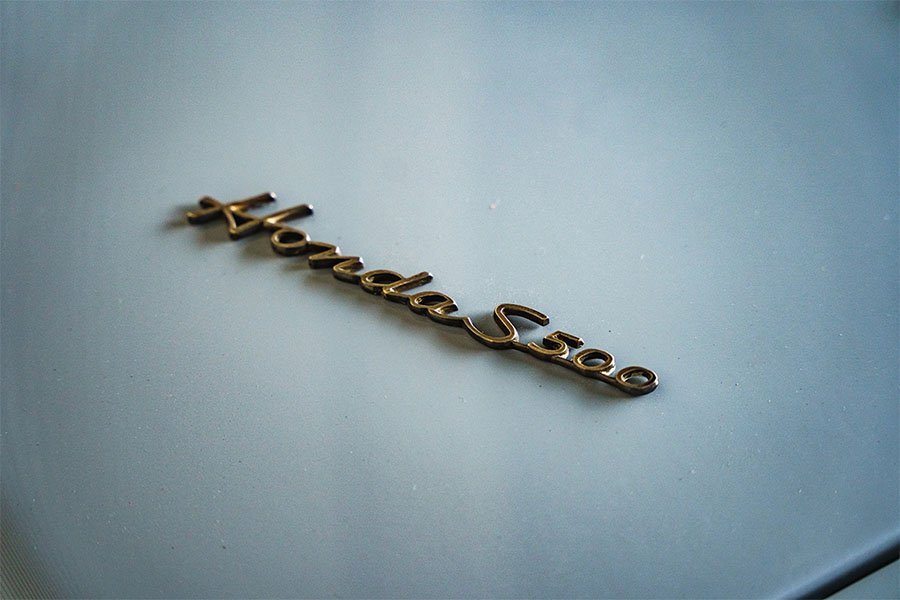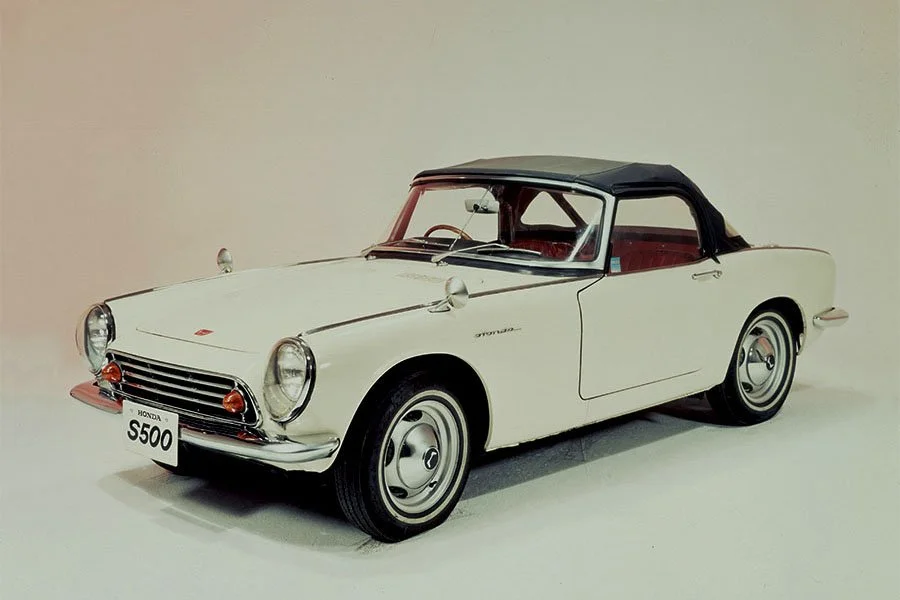Guide: Soichiro's First Four-Wheel Screamer - a Historical & Technical Appraisal of the Honda S500
/BACKGROUND
Having left the family home in Shizuoka aged 15 without any formal education, Soichiro Honda headed for Tokyo where he found work as an apprentice car mechanic. Six years later in 1922, Honda (now aged 22) returned to Shizuoka and started his own auto repair business.
In 1936, Soichiro Honda contested the 1st Japan Automobile Race at Tamagawa Speedway driving a turbocharged Ford of his own design. However, an eye injury sustained during the event meant he subsequently quit competitive driving.
One year later, Honda founded Tokai Seiki which made piston rings for Toyota. He opened plants in Yamashita and Iwata, but during World War 2 the former was flattened by a US bombing raid while the latter was destroyed in 1945’s Mikawa earthquake.
Following the end of hostilities, Soichiro sold what remained of Tokai Sekei to Toyota and, in October 1946, used the cash to establish the Honda Technical Research Institute.
Initially the company took advantage of surplus of wartime equipment to mate leftover engines to existing bicycles, but in 1948 Honda began production of a motorised bicycle manufactured entirely in-house.
Honda’s first true motorcycle followed in 1951.
By 1954, Honda was Japan’s leading motorcycle manufacturer and, by 1959, the biggest in world.
Around this time, Soichiro Honda began to explore the possibility of moving into the four-wheel market. In May 1955, the Japanese Ministry of International Trade and Industry had issued an appeal to help boost the economy through the development of a passenger car and Honda duly established a 50-strong research and development team to create such a machine.
The pace of development quickened when the Japanese government announced a proposal that would allow only three manufacturers to build cars. Such a law never came to fruition, but regardless, Soichiro was ready to unveil his first passenger car at the 11th National Honda Meeting General Assembly held at the Suzuka Circuit in June 1962.
The resultant S360 (a front-engined, rear-drive, open-top two-seat sports car) was subsequently given a public debut at the Tokyo Motor Show the following October, by which time two additional prototypes had been developed: the bigger-engined S500 and the T360 mini truck.
Ultimately, the S360 never made it into production as Honda opted to exclusively offer the S500 instead. This was a result of the bigger engined car’s better commercial prospects, particularly with regard to potential export markets. In light of the quest for more power, the S500’s original 492cc engine was enlarged to 531cc while the 354cc engine from the S360 found a home in the T360 mini truck.
Together, the T360 and S500 became Honda’s first four-wheeled offerings.
Unlike some other Japanese manufacturers that were happy to construct third party designs under licence, Honda had created the S500 completely from scratch. This combined with Honda’s cutting-edge design philosophy meant that, compared to contemporary rivals from the likes of MG, Triumph, Morgan and Alfa Romeo, the S500 was technically far superior.
S500 production began in October 1963. The engines / differentials and bodies were manufactured at Honda’s Saitama and Suzuka plants respectively. These components were then transported to the Hamamatsu factory where transmissions were made and final assembly took place.
CHASSIS
The S500 was based on a conventional steel ladder-type chassis with a wheelbase of 2000mm.
Independent suspension was used all round with double wishbones and longitudinal torsion bar springs up front and a never before seen trailing arm / coil spring arrangement out back. Here, in a fashion highly reminiscent of a motorcycle, a solid differential was mounted forward of the wheels with swing arms at either end. The wheel was mounted on the swingarm and power was transmitted through chains in sealed cast aluminium oil bath cases.
Finned aluminium drum brakes were fitted at either end along with 13-inch steel wheels that featured a decorative polished hub cap.
A 25-litre fuel tank was installed under the trunk floor.
ENGINE / TRANSMISSION
In the engine bay was a state-of-the-art longitudinally-mounted all-alloy inline four cylinder motor with dual overhead camshafts, a crossflow cylinder head and needle roller bearings.
Compared to the S360, the original S500 prototype ran an enlarged 492cc engine achieved by enlarging the cylinder bores from 49mm to 52mm and extending the stroke from 47mm to 58mm. In order to further stretch the displacement to 531cc for the Type AS280E engine that went into production, the bores were further enlarged by an additional 2mm to 54mm.
With a bank of four SU-type Keihin sidedraught carburettors and a 9.5:1 compression ratio, peak output was 44bhp at 8000rpm and 33.2lb-ft at 4500rpm. With its astonishing 9500rpm redline, the S500 was the highest revving car on the market.
Transmission was through a four-speed gearbox with synchromesh on the upper three ratios and single-plate hydraulic clutch.
BODYWORK
In typical Honda fashion, the S500 was styled in-house.
At the front, circular headlights were set within short cowls and behind clear glass covers. Mounted centrally was a chrome-plated bar-type grille with inset indicators.
Atop the gently rounded front fenders was a decorative chrome strip that ran all the way back to the base of the tail where single circular lights were located on a distinctive oval fascia.
Both front and rear decks were comparatively flat and given a low profile sunk below the tops of the fenders.
Full width bumpers were fitted at either end.
Down each flank, a Honda script was added to each front fender. From this angle the S500’s characteristic very short overhangs were easy to spot.
Body panels were fabricated exclusively from steel.
INTERIOR
Like the exterior, with no donor model from which to source equipment, the S500’s interior fixtures and fittings were unique to the model.
Behind the wood-rimmed steering wheel with its trio of vented aluminium spokes was a curvaceous dash fascia given a matching natural aluminium finish.
Instrumentation comprised a large 11,000rpm rev counter and 160kmh speedometer, inboard of which was a smaller dial for water temperature and a combined fuel gauge / ammeter. Underneath these smaller dials was a separate alloy-faced control panel with five toggle / flick switches below which was a blanking plate for the radio and an ashtray.
Upholstery was a mix of vinyl leatherette and carpet with well-padded seats that featured a handsome fluted pattern.
When lowered, the folding canvas roof lay almost flush with the rear deck and was concealed below a vinyl tonneau supplied with every car.
A heater and lockable glovebox were fitted as standard along with manual window winders.
OPTIONS
Honda offered the S500 in a choice of red, white, yellow or blue-grey exterior colours with black or red upholstery.
Optional extras included a fibreglass hardtop, a radio and a Plexiglas wind deflector for the top of the windshield.
WEIGHT / PERFORMANCE
The S500 weighed in at 680kg and had a top speed of 80mph.
0-62mph would likely have taken in the region of 18 seconds.
1963 MARATHON DE LA ROUTE (LIEGE-SOFIA-LIEGE RALLY)
In anticipation of the S500’s launch, Honda decided to send four left-hand drive cars over to Europe and contest the gruelling Marathon de la Route which for 1963 was also known as the Liege-Sofia-Liege Rally.
Held between August 27th and 31st, the 3430 mile course took the competitors through Belgium, Germany, Austria, Italy, Yugoslavia and Bulgaria with factory teams from Mercedes-Benz, Saab, Citroen, BMC and Ford all vying for victory.
The works Hondas were to be driven by the Japanese pairing of Nobuo Koga / Giichi Suzuki and the Belgian team of Henri Quernette / Jean-Pierre Guyette.
Ahead of the event, two of the S500s were used to recce the course, during which it became clear the rough Yugoslav roads required the installation of tougher springs and stabilisation bars. With the Yugoslav section expected to be the most problematic of the event, the two recce cars were kept in the country to serve as a source of spare parts during the event.
The contest got underway at 6pm with the field departing Liege under police escort from where they headed to Spa Francorchamps at which point the rally proper got underway at 10pm with the 85 starters flagged off three abreast.
From Spa, the field headed to Steinbruk on the German border, then via Karlsruhe into Austria near Lindau where immense tourist traffic caused havoc. Via Brunico and Predil the competitors headed on to the dreaded Moistrocca in Yugoslavia, after which the road conditions improved en route to Ljubljana.
Unfortunately, 20km from Ljubljana the Honda of Koga/ Suzuki was involved in a collision that saw it leave the road, overturn and drop into a deep ditch. Sadly, Giichi Suzuki (who was Honda’s Head of Testing Services and a former 125cc motorcycle champion for the company) was fatally injured while Nobuo Koga suffered just bruising.
As for the Belgian pairing of Quernette / Guyette, having already suffered a broken radiator earlier in the event, they made much use of the donor cars while in Yugoslavia. However, they dropped out having exceeded the permitted time limit en route to checkpoint 17 in Perast.
The 1963 Marathon de la Route was ultimately won by Eugen Bohringer and Klaus Kaiser driving a factory entered Mercedes-Benz 230 SL on what was the model’s competition debut.
As for Honda, they would return for a crack at the 1964 event with a team of S600s.
END OF PRODUCTION
S500 production ran from October 1963 to September 1964, by which time 1363 examples had been completed, the overwhelming majority of which were right-hand drive.
It was replaced by the more export-friendly S600 which had a 606cc 57bhp engine.
Text copyright: Supercar Nostalgia
Photo copyright: Honda - https://global.honda/ & Bingo Sports - https://bingosportsworld.com/












































